Of Lamps and Whales
Today, did big oil save the whales? The University of Houston presents this series about the machines that make our civilization run and the people whose ingenuity created them.
We lit lamps with oil from antiquity until we had electricity. But what oil? Petroleum didn't find wide use until after 1860. Before that, most lamp oils came from vegetables or animal fat. And whales provided America's most desired oil by the mid-19th century.
Many people had done whaling, since prehistory - Arctic Native Americans, Japanese Ainu, Basques, early Koreans, and more. Then industrial scale whaling began picking up in the 17th century. Whaling was a major American industry by 1820.
This has led to what we call the Whale Oil Myth - the idea that the discovery of oil let the free market save whales from extermination. Or, at least, delay their extermination. For we did have whales under threat of extinction in 1860.
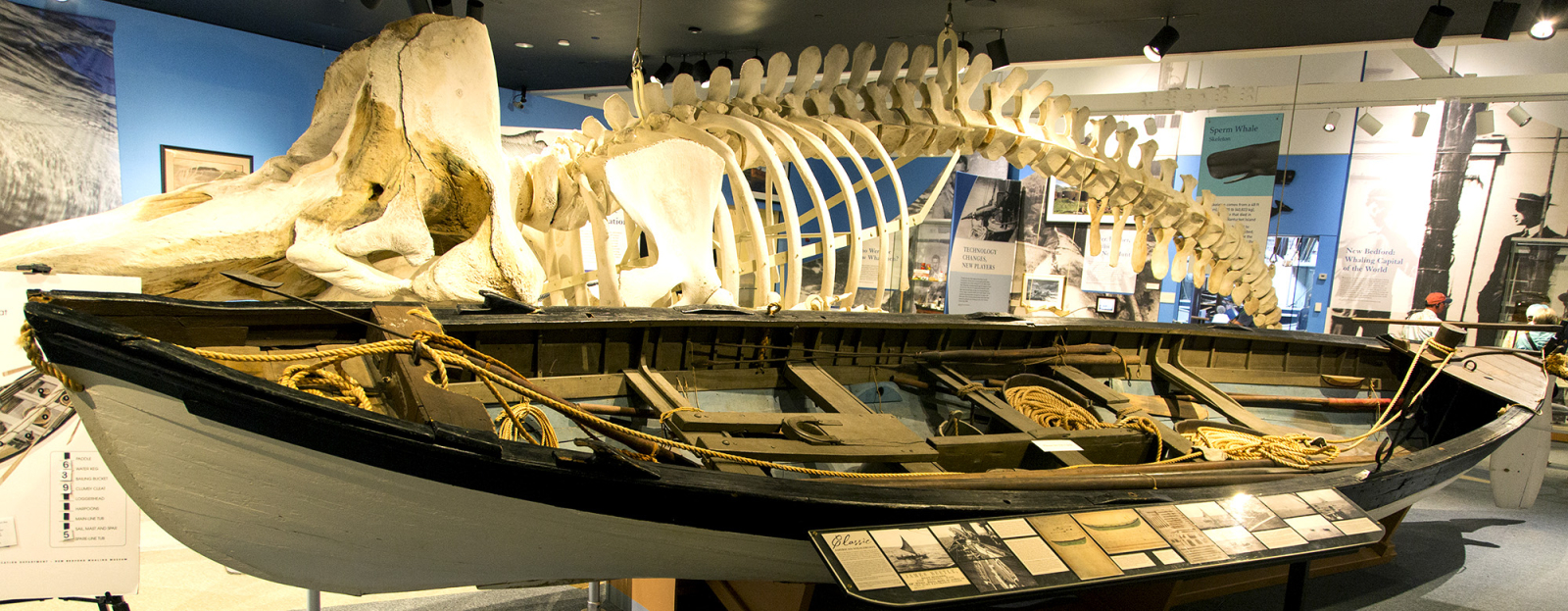
A 19th century whaleboat in front of a Sperm Whale skeleton
New Bedford Whaling Museum. Photo by John Lienhard.
So what really happened? The price of whale oil had become very high by the end of the Civil War. Only the wealthy could use it. Most lamp fuels were a variety of far cheaper oils derived from plants, land animals, or coal - fuels like turpentine, lard, kerosene, alcohol, ... One very popular witch's brew was camphine - a turpentine derivative mixed with camphor oil.
So the market had driven us away from using whale oil well before petroleum oil became a major business. Then, as the Civil War began, kerosene (derived from petroleum) was taxed at ten cents a gallon. But the tax on the alcohol used in camphine was two dollars per gallon. Early petroleum derivatives suddenly enjoyed a huge government price advantage.
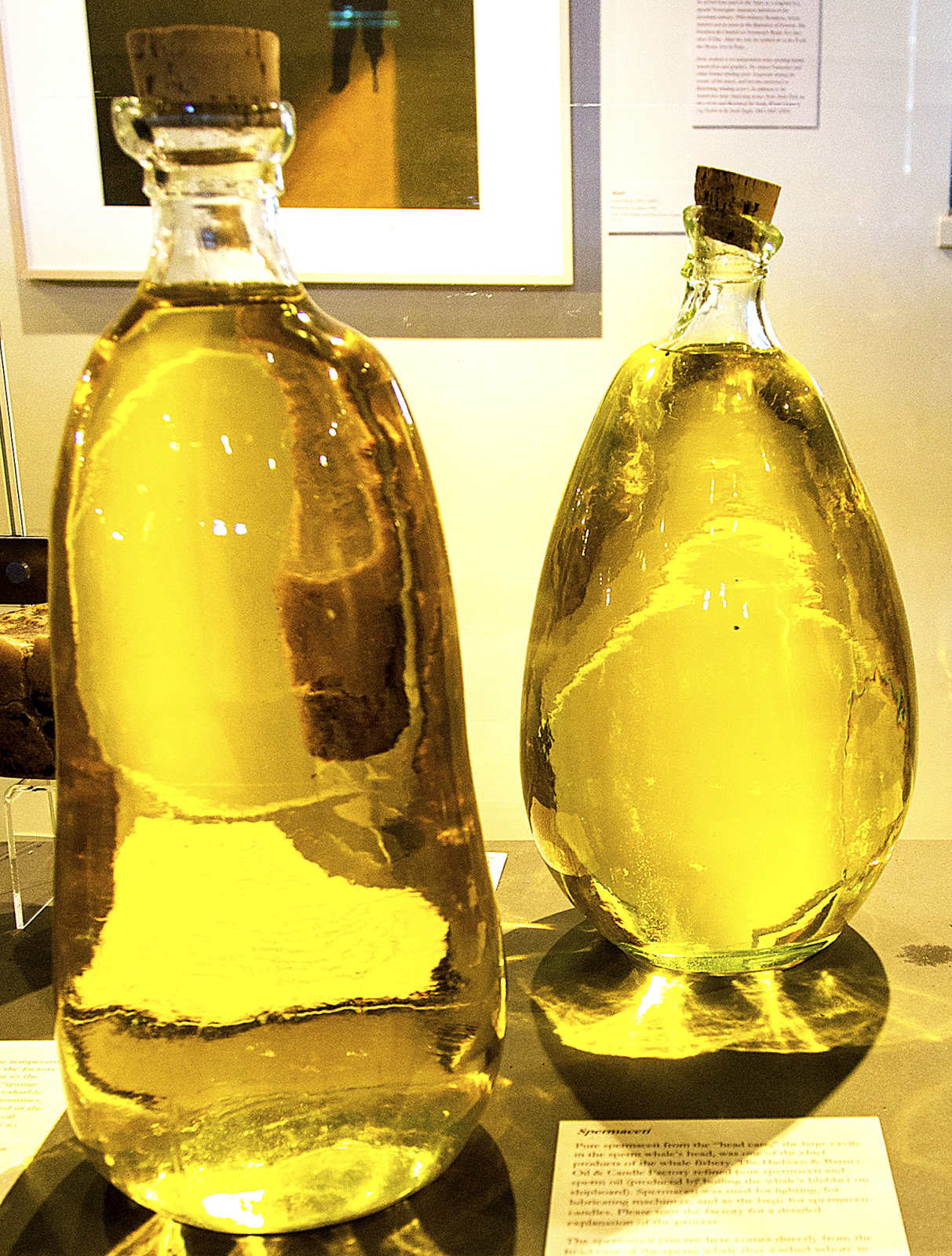
Bottles of spermaceti oil obtained from a beached Whale in 1998. Spermaceti is the mix of wax and oil obtained from the head of a Sperm Whale. Here is the oil, separated out.
Nantucket Whaling Museum. Photo by John Lienhard.
But that was an advantage over camphine, not over whale oil. In fact, whale oil never was competitive. It was always like killing elephants so the wealthy can have costly carved ivory. As for lamps, government-supported petroleum was only a stopgap until Edison began building public electric lighting systems in 1882.
For a while, this story made a kind of political football. Free market voices argued that big oil had saved the whales. But it became clear that whale oil use had dropped to a mere fraction of what it'd been pre-Civil War - before petroleum began lighting our lamps. That's why we now speak of the Whale Oil Myth.
Of course we keep valuing life with dollars - for humans as well as whales! Risk analyses that put a dollar value on human lives are a regular part of our financial picture.
But dollars don't recognize what whale extermination will mean. Beyond killing off a great intelligent fellow creature, consider the effects of a trophic cascade. That's the sequence of dramatic ecological changes that follow any removal of a species from the top of a food chain.
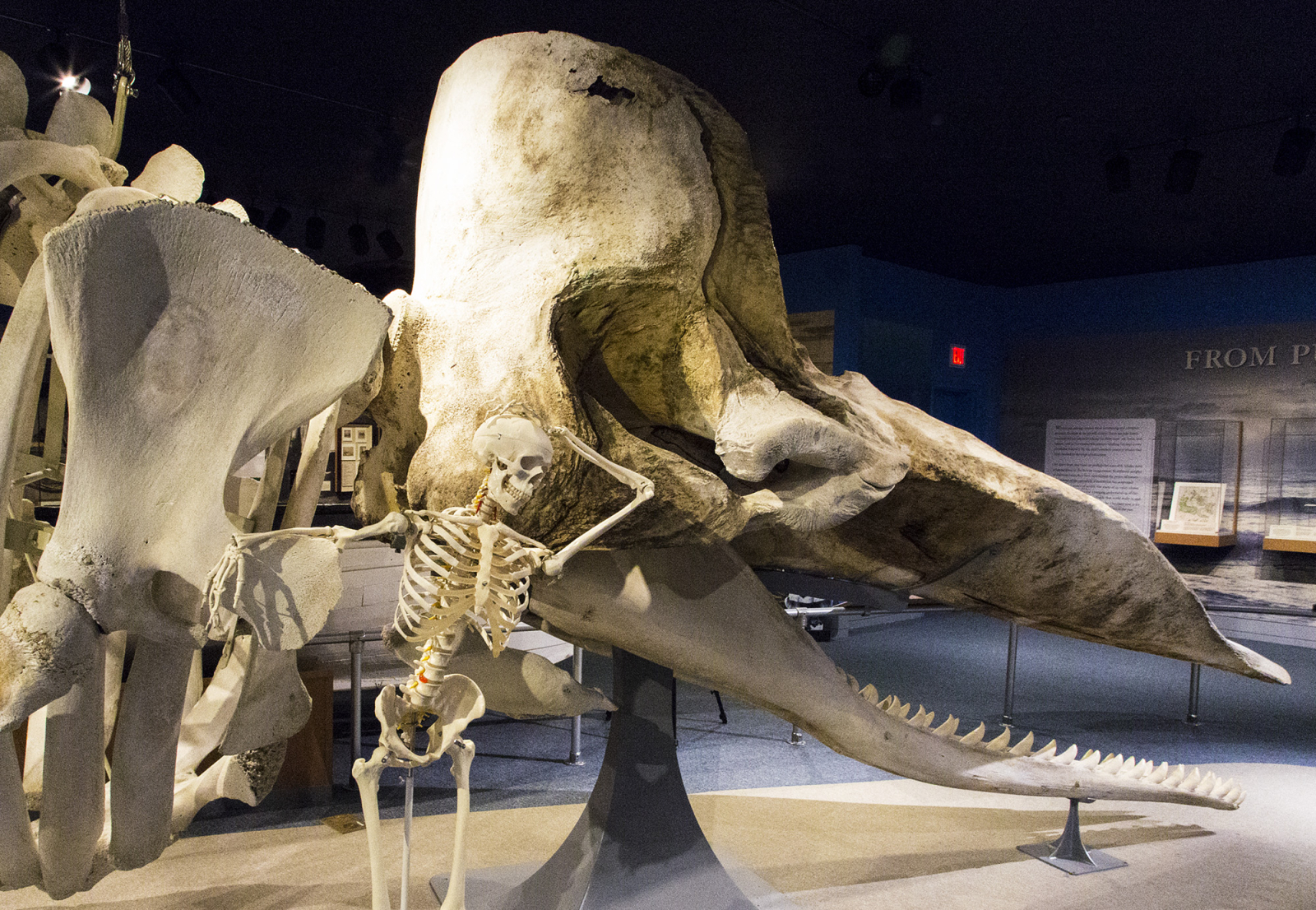
Hunter and hunted: Consider the perspective of a human Skeleton by a Sperm Whale's head.
New Bedford Whaling Museum. Photo by John Lienhard
Whales were saved once when they priced themselves out of the market. How, or if, they'll be saved next time depends on whether we see beyond today's dollars -- whether we can count the complex, long-range costs such destruction inevitably brings with it.
I'm John Lienhard at the University of Houston, where we're interested in the way inventive minds work.
For more on "The Whale Oil Myth" see this article in the Atlantic.
See also the Wikipedia articles on The history of Whaling; and on Trophic Cascades.
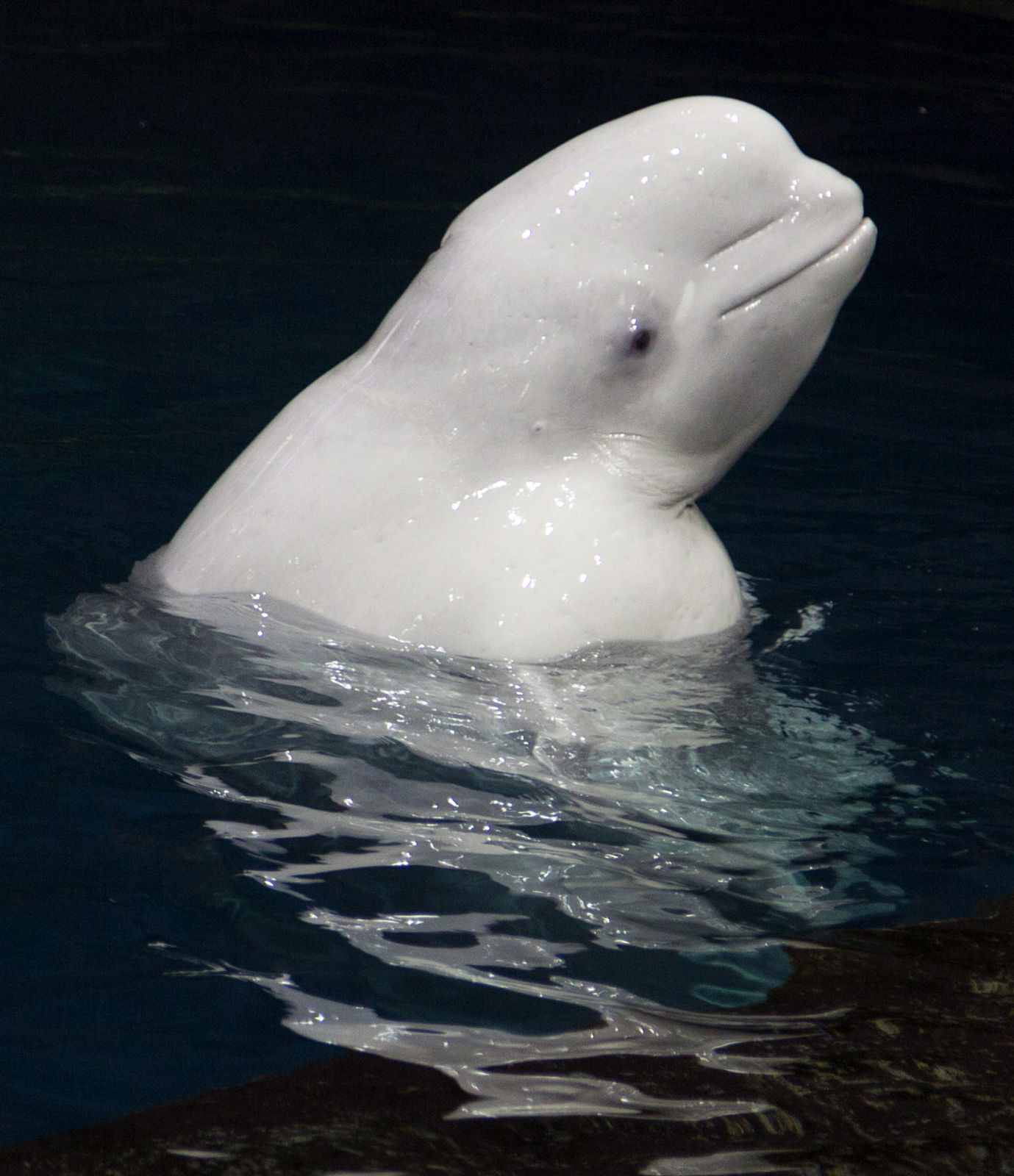
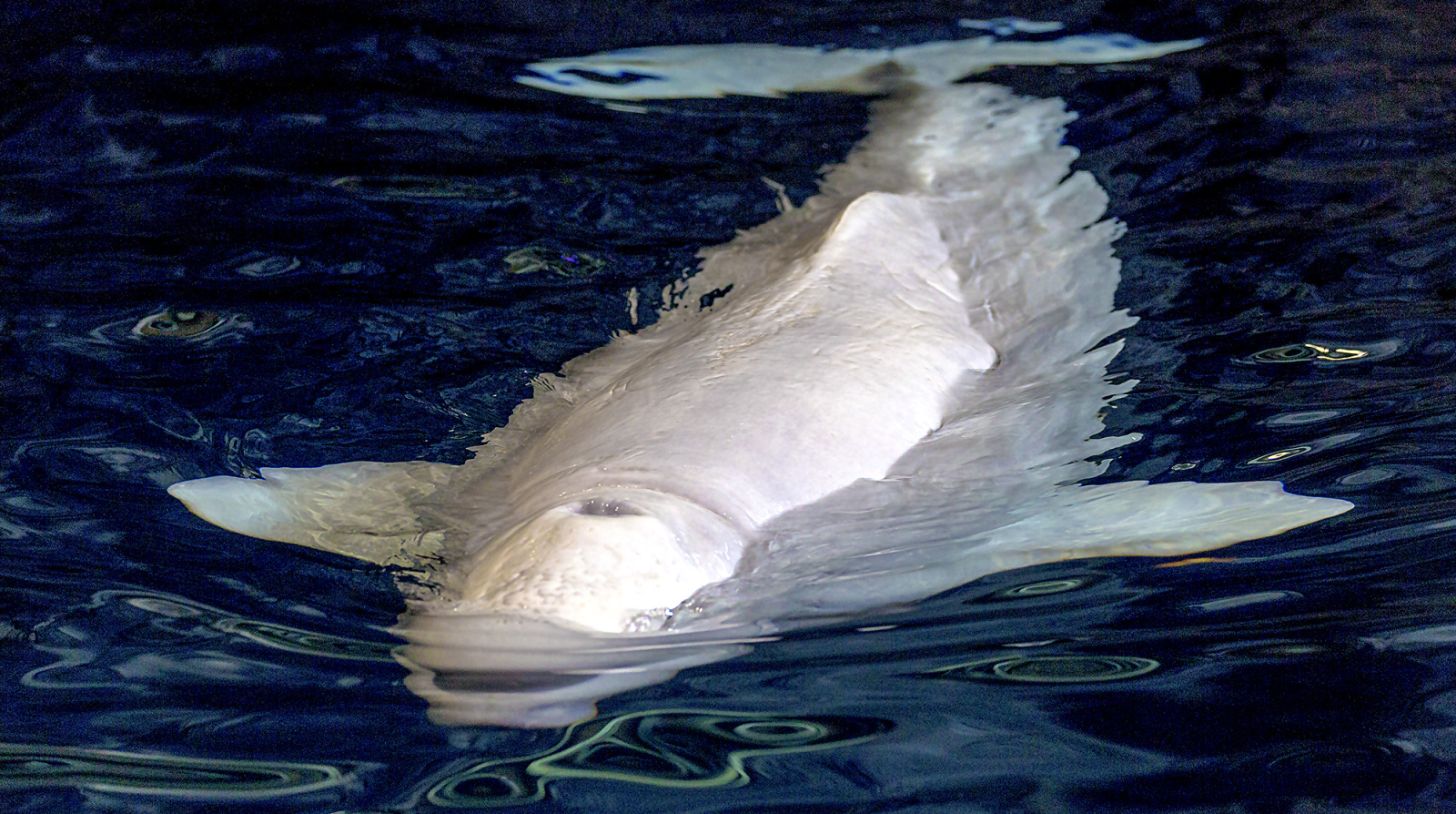
Above: A Beluga Whale emerges and looks about.
Below: A Beluga swims toward us.
Both photos by John Lienhard in Chicago's Shedd Aquarium.
This episode was first aired on July 26, 2017